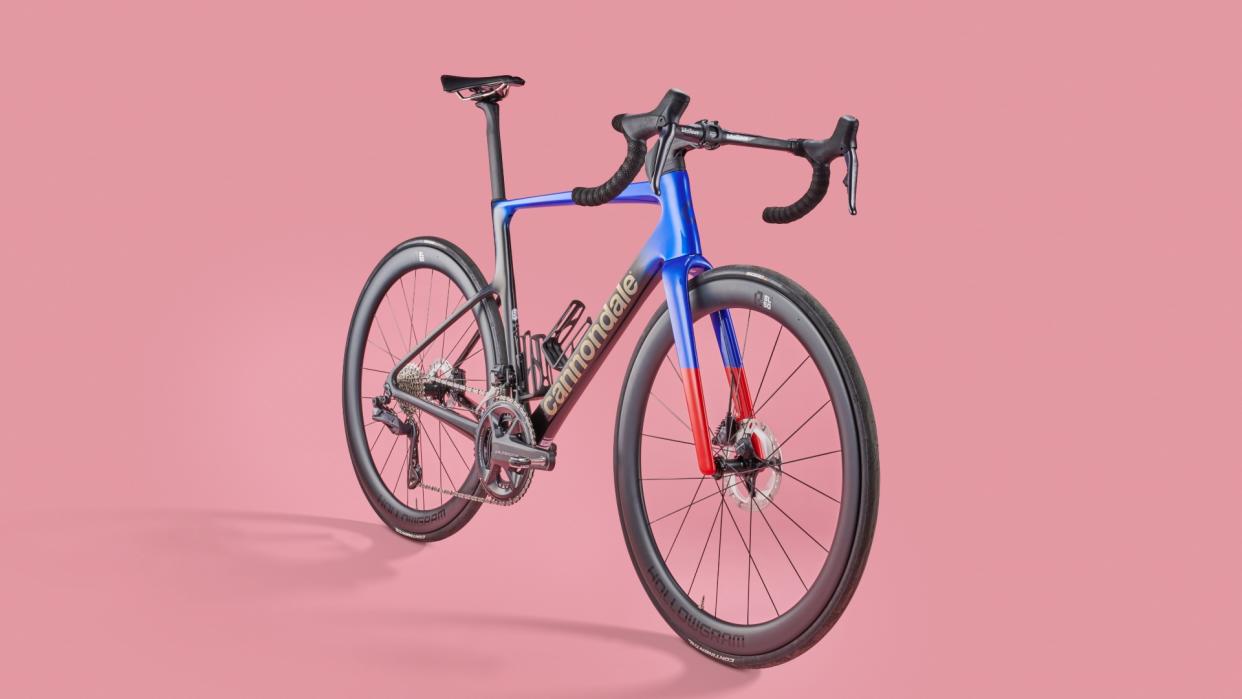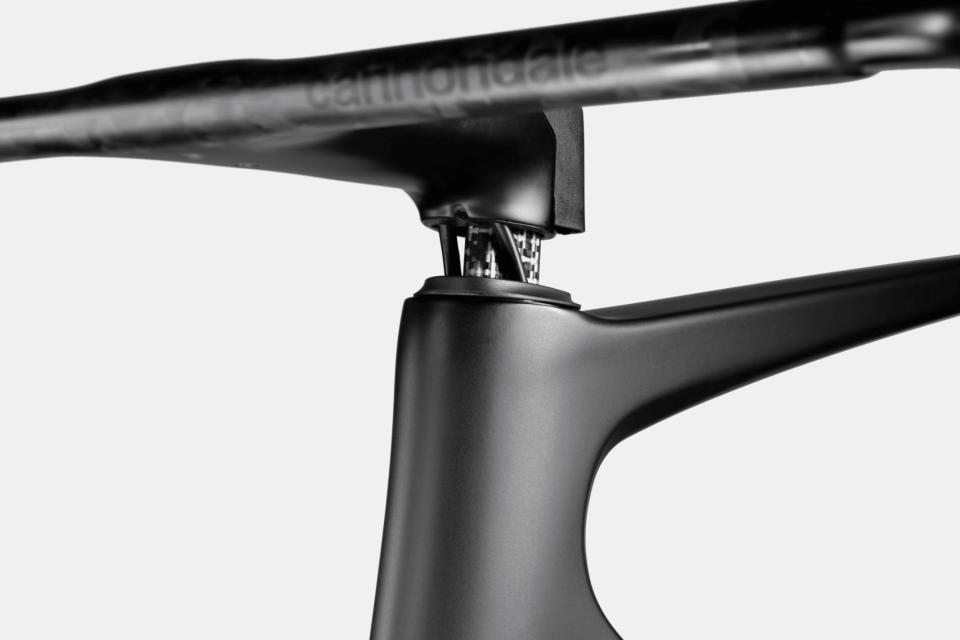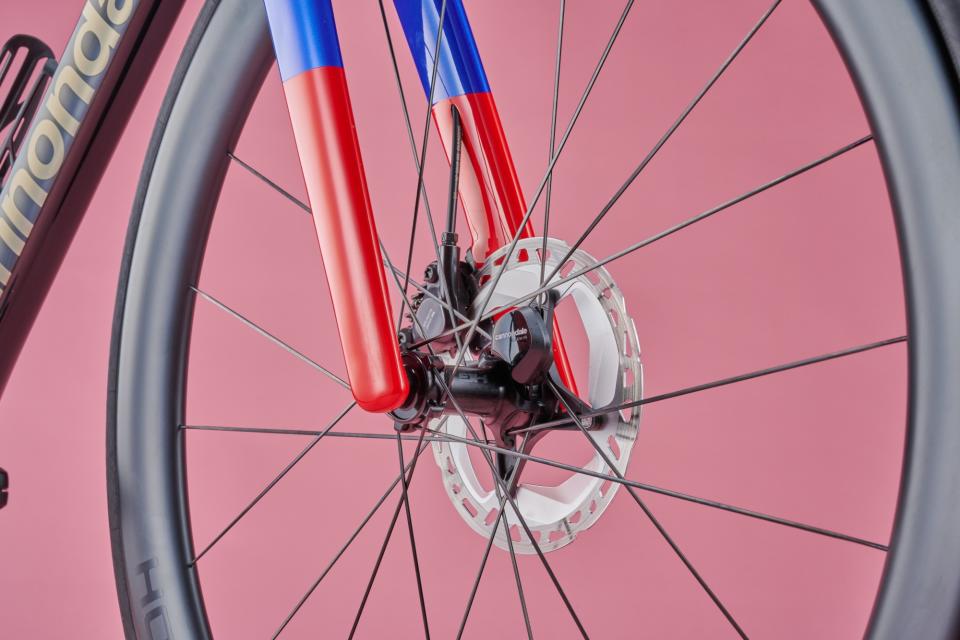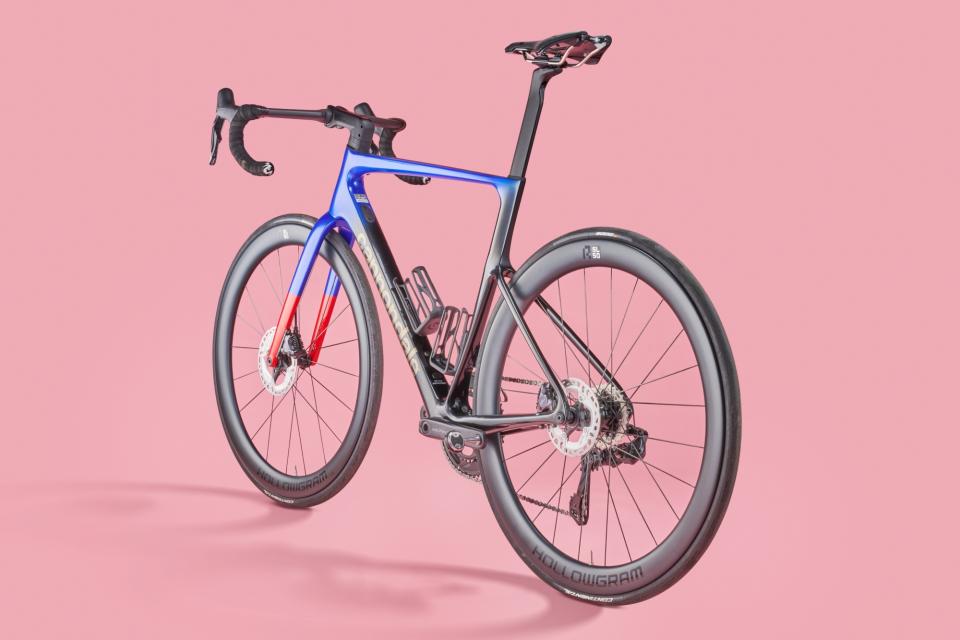Cannondale SuperSix EVO Hi-Mod review - the all-round racer's choice

Back in February, Cannondale released the fourth generation of its much-loved SuperSix Evo. The race bike, which holds quite the reputation, saw an aerodynamic redesign, as well as a frameset hierarchy changes. The introduction of the LAB71 framesets, which dethroned Hi-Mod as the range-topping build option, made headlines with a price tag of $15,000 / £12,500.
Retailing for a much more respectable $8,300 / £8,250, the Hi-mod Ultegra Di2 we had on test performed as well as this bike heritage would lead you to expect, boasting exemplary handling and super stiffness. The SuperSix platform may be Cannondale's climbing bike, but with all the new updates to aero and integration, this might just be one of the best road bikes on the market.
Cannondale SuperSix EVO Hi-mod: The Frame
In recent years, we have seen a trend of lightweight bikes becoming more aero, and aero bikes becoming more lightweight. After completely remodelling the SuperSix from its previous generation, the new SuperSix Evo has continued down a more aerodynamic path, receiving some serious revamping for 2023.
As we mentioned before, this year Cannondale has dethroned the SuperSix EVO Hi-Mod by adding a further tier to the range in the form of the LAB71. All three of the framesets on the market now though, share the same remodelling and lots of the same tech.
The biggest visual change between the SuperSix Evo V3 and V4 is an all-round aerodynamic clean-up of the frame shape. The 2023 race bike sits with a more compact stance over the previous iteration, featuring a more steeply sloped top tube and lower dropped seat stays. The fork has also been widened to reduce high pressure air build up around the front wheel, which not only makes for smoother airflow but also gives the new SuperSix tire clearance of up to 34mm.

Cannondale says the design is the result of hours of wind tunnel testing and the use of computational fluid dynamics - software that can cycle through hundreds of virtual designs and test them for aerodynamic efficiency. One touch I personally love is the fork blade - the through-axle is only visible on the side it's tightened from, which makes for such a clean look.
The product of all this redesign is a much more refined-looking machine, which Cannondale claims saves 17 watts at 45kph when compared to the previous generation. The new Cannondale is undoubtedly sleek - but the American brand has also implemented lots of improvements and changes beyond what meets the eye.
Cannondale has also taken a new approach to internally routed headsets. The new 'Delta Steerer' is no longer round, but a triangular design which allows cables to pass either side of the steerer. Attaching standard stems is still possible thanks to a few shims, which were less finickity than I had imagined to set up.

One welcome change is the move back to BSA 68mm threaded bottom bracket system. This is a trend across a lot of the Cannondale range which I first saw on the Cannondale Topstone Carbon 3 which I reviewed earlier this year. Press-fit bottom bracket standards can be notoriously hard to navigate as a consumer, and even if you leave that all up to the bike shop, then you may still be infuriated by the creaks often heard from complaining press-fit systems.
Cannondale also includes aero bottles and cages with the new SuperSix, which can also take round bottles too.

We've mentioned aero efficiency, but how does the new machine stack up with weight and compliance?
Well, as we mentioned before, the Hi-mod no longer sits as the range-topping frameset, but that doesn’t make it heavy. In fact, the LAB71 frameset costs more than the Hi-mod, yet it only saves a minute 40 grams - that's about one large SIS gel... The full build we had on test came in at 7.69Kg (54) which sits in a similar ballpark to many of its competitors at this price point.
While Cannondale has dropped the seat stays in a bid for more frame compliance, they have also fitted a wider seatpost than on the V3, so these changes seem to cancel one another out. It's important to note here that this really is a bike for racers and serious riders, so the firm ride quality shouldn't come as too much of a shock.
Cannondale SuperSix EVO Hi-mod: The build
The full name of the model we had on test is the Cannondale SuperSix EVO Hi-Mod Ultegra Di2 - quite a mouthful, but it features exactly what it says on the tin.
Our test bike was shod in the latest 12-speed semi-wireless Ultegra R8170, and the performance was just what you would expect - precise, quick and seemless. The bike comes stock with an 11-30 cassette alongside 52/36 chainrings which offer plenty of gear range.

Cannondale itself provides the wheels, with its Hollowgram SL50s, which as the name suggests, are 50mm deep. The wheels come tubeless ready, although out of the box the continental Grand Prix's are set up with inner tubes.
The RSL50s wheels have a 21mm internal rim width and a super wide 32mm external rim width - this seems super wide, but it made for an almost totally flush edge between the 25mm stock tires (which came up a little large) and the rim, which is great for smoothing airflow.
Finishing kit-wise, Vision handles the bars with its Trimax carbon aero bar, while Prologo provides the saddle. This build does not come with a one-piece bar and stem combination but does feature totally internal cable routing.
Cannondale SuperSix EVO Hi-mod: The ride
Since its first release all the way back in 2011 the SuperSix EVO has long been hailed as one of the best-handling road bikes on the market. With such heritage to live up to, it is no surprise that Cannondale barely touched the geometry, with the only change being 2mm of length added to the chain stays to accommodate wider tires.
To us here at Cycling Weekly though, it is music to our ears. The 'if it ain't broke, don't fix it' approach taken by Cannondale has certainly delivered - this bike handles superbly.
The testing grounds for me consisted of some pretty varied Oxfordshire terrain, which include a lot of one to five-minute climbs.
My first ride on the new SuperSix was a short one-hour blast around a local loop with some short climbs and twisty roads, and early impressions were strong. The bike instantly boasted that zippy feel on acceleration which really brings a fun element of riding, certainly helping me to feel more fit than I currently am!
Once up to speed, the bike held momentum really well too, and while I won't try and tell you my mentally calibrated power meter could feel a 14 watt difference at 45kph, but I can say with confidence, that the SuperSix won't penalize you on flatter terrain.

So the bike impressed me initially, but how did I get on with it longer term? Well, a few Cotswold jaunts allowed me to really get personal with the new race bike, and it continued to impress.
Firstly, that handling - though we may not have the luxury of 10km Alpine descents here in the UK, we do have enough technical roads to get a good feel for a bike's character, and as I briefly mentioned before, it feels brilliant.
The SuperSix floats an impressive balance between being quick to handle, whilst not feeling overly skittish. I was able to push hard on descents I knew well with full confidence in the bike even early on in my test period - needless to say the Shimano disc brakes took care of stopping without any hesitation.
Another aspect of any bike which takes a while to figure out is comfort. Once I had got settled with my position on the new SuperSix, I did notice that on longer rides, there was a noticeable amount of vibration transmitted to my hands and through my back - I think the wider seat post and more aero tube profiles are likely to blame here. It is not by any means a deal breaker, more a word of warning that this is an out-and-out race bike, but compared to our Race Bike of the Year winner, the Cervelo S5, this was just a little bit harsher. One thing I would recommend here is a switch out to 28mm tires, as this would undoubtedly help, and provide more cornering grip in the process.
My other gripe from a fitment point of view was the bar width. The Vision Trimax carbon aero bars measured up a huge 440mm from edge to edge, which seems to me slightly dated, especially given this race bike's pedigree. And it's not like you can switch them out easily too, as a full relabelling is needed to change out for different handlebars.
Put the fit elements aside though, which are personal, and this bike is a true racer. The handling is top class, and it responds to every input with ease, making it truly inspiring to ride.
Cannondale SuperSix EVO Hi-mod: Value and conclusion
Overall, the new Cannondale SuperSix Evo Hi-Mod showed a standout performance on all terrain. It certainly still favors the uphills, which is what made it our Climbing
Bike of the Year, but the new bike is more versatile than ever before.
As far as value is concerned, the SuperSix Evo Hi-Mod Ultegra Di2 is by no means cheap ($8,300 / £8,250), but it does offer nearly all of the performance of the LAB71 range-topping model, for a huge $7,000 less. In my view, this makes the Ultegra Di2 model one of the best value bikes for a keen racer that doesn't have the budget for a hyperbike, but wants a reliable performance-focused racing machine.
Compared to rivals at this price point, Cannondale does well to keep the price just below its competitors. For example, the Trek Emonda SLR 7 also boasts carbon wheels and Ultegra Di2, but costs $8,999 / £8,799.
It is worth noting though, that the SuperSix Evo 2 retails at $5,500. You don't get a Hi-Mod frame, and wheel specs do take a slight hit, but with the same frame shape and geometry, this is worth a look if budget is a limiting factor.